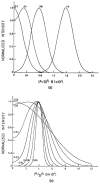Fiber-Optic Skew Ray Sensors
- PMID: 32354093
- PMCID: PMC7248862
- DOI: 10.3390/s20092499
Fiber-Optic Skew Ray Sensors
Abstract
The evanescent fields along multimode fibers are usually relatively weak. To enhance the sensitivity of the resulting sensors, skew rays have been exploited for their larger number of total internal reflections and their more comprehensive spread over the fiber surface. The uniform distribution of light-matter interactions across the fiber surface facilitates high sensitivity through an increased interaction area, while mitigating the risk of laser-induced coating-material damage and photobleaching. Power-dependent measurements are less susceptible to temperature effects than interferometric techniques, and place loose requirements on the laser source. This review highlights the key developments in this area, while discussing the benefits, challenges as well as future development.
Keywords: evanescent field; multimode fiber; ray optics; sensor; skew ray.
Conflict of interest statement
The authors declare no conflict of interest.
Figures












References
-
- Fabian N.S., Socorro A., Del Villar I., Diaz S., Matias I.R., Socorro A. Multimode-Coreless-Multimode Fiber-Based Sensors: Theoretical and Experimental Study. J. Light. Technol. 2019;37:3844–3850. doi: 10.1109/JLT.2019.2921609. - DOI
-
- Han F., Lang T., Mao B., Zhao C.-L., Kang J., Shen C., Wang N. Surface plasmon resonance sensor based on coreless fiber for high sensitivity. Opt. Fiber Technol. 2019;50:172–176. doi: 10.1016/j.yofte.2019.03.014. - DOI
-
- Xiong Y., Tan J., Wang C., Wu J., Wang Q., Chen J., Fang S., Duan M. A miniaturized evanescent-wave free chlorine sensor based on colorimetric determination by integrating on optical fiber surface. Sens. Actuators B Chem. 2017;245:674–682. doi: 10.1016/j.snb.2017.01.173. - DOI
-
- Chevalier P., Piccardo M., De Naurois G.-M., Gabay I., Katzir A., Capasso F. In-water fiber-optic evanescent wave sensing with quantum cascade lasers. Sens. Actuators B Chem. 2018;262:195–199. doi: 10.1016/j.snb.2018.01.159. - DOI
Publication types
LinkOut - more resources
Full Text Sources

